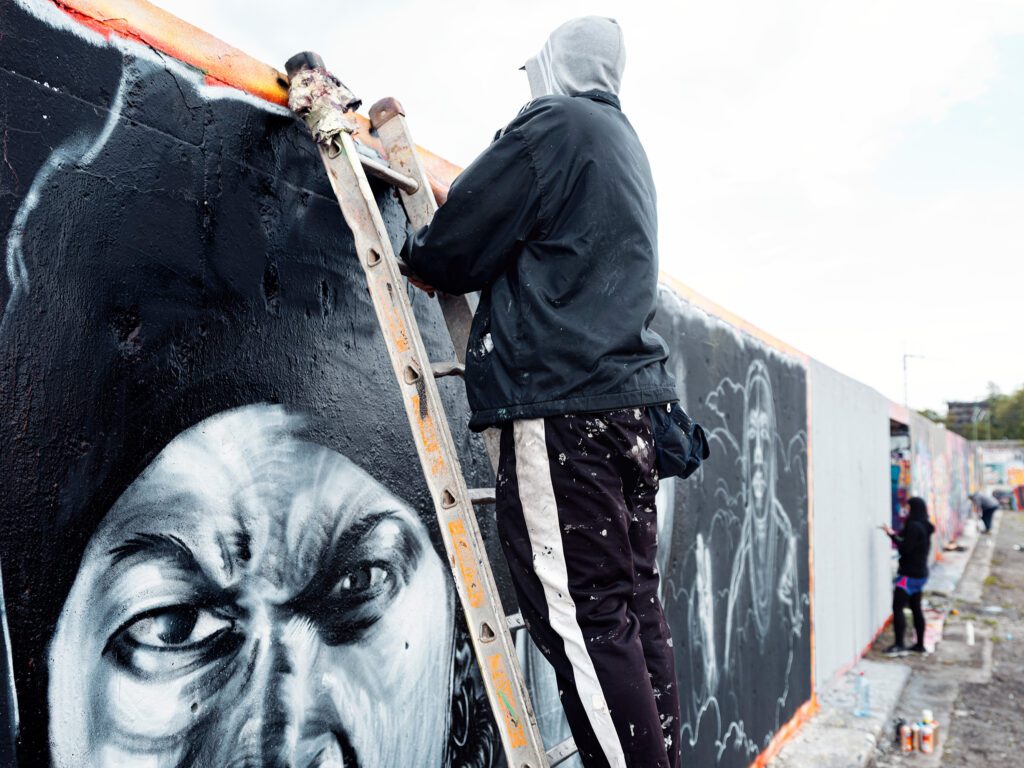
Felix Gephart
Draftsman, painter and graffiti artist
Felix Gephart started drawing on papers and spraying on walls at a young age. The latter captivated him in particular. Initially, it was primarily letters, a pseudonym in ever-changing variations and color combinations, classic graffiti influenced by American models and that of his older brother, who had turned to writing. At the age of 12, he was probably one of the youngest taggers in his hometown of Bochum. Later on, drawings and images were added to the lettering, conveying literary, sometimes satirical, and political content. Much of what he painted before studying, he learned from older and experienced graffiti writers.
He went on to complete two degrees, one in Graphic Design (Dortmund) and another in Illustration as Visual Essay (New York). The next steps included creating narrative graffiti based on literary references, illustrations for newspapers, magazines, and books, as well as exhibitions in New York, Berlin, and Cologne. It is rather atypical for contemporary illustration that the drawings and images were almost exclusively created in analog form and in a relatively large size. These images add new and unfamiliar perspectives to existing references, highlighting previously overlooked but significant moments and episodes. Through the use of color, light and shadow, chosen perspectives, scenery, and techniques, they also present a well-known literary source in a new light.
Among the many paper works, you will find brush drawings depicting George Orwell's highly relevant surveillance dystopia, "1984." There are also black and white ink paintings inspired by Dalton Trumbo's anti-war classic, "Johnny Got His Gun," and delicate layers of Rapidograph hatching and colored pencil, combined with sprayed ink, providing deep insights into the soul of Bret Easton Ellis' "American Psycho."
In the "Low Life" series, an almost forgotten New York is portrayed through vibrant and pulsating color silhouettes. On the other hand, the images for his book "Wicked New York," depicting legendary gang feuds and the draft riots in New York during the Civil War, emerge from a fine, smoke-like spray mist. They gain definition through sharp black and white contrasts and eventually achieve spatial depth through dense cross-hatching with varnish and acrylic. The technique used in these images appears to be the result of an unusual combination of various printing techniques, ranging from woodcuts to drypoint etching, aquatint, and scratchboard.
Felix Gephart's series of images are quite diverse, both in terms of style and technique, as he works within specific thematic contexts. Each textual reference, along with the questions it raises, as well as the historical research and personal experiences associated with a new visual theme, lead to a new graphical representation.
